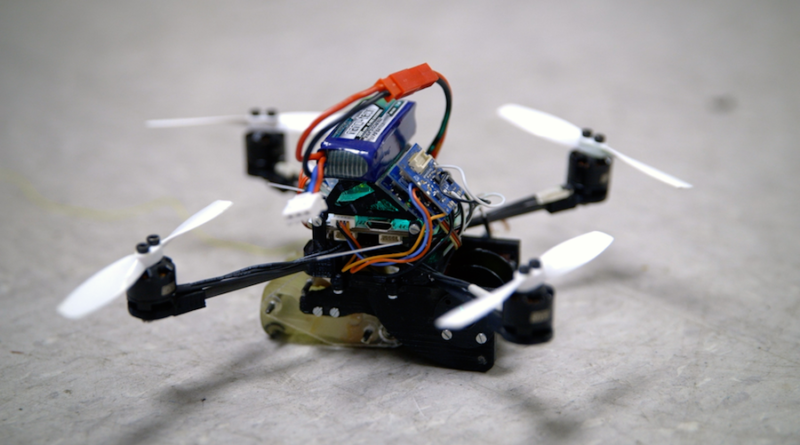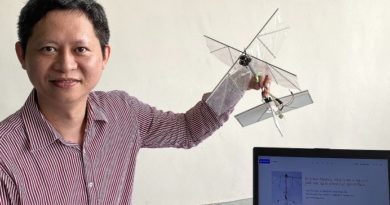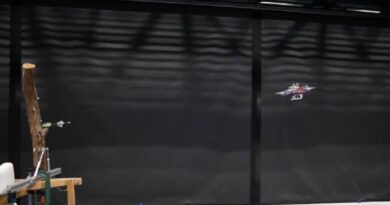Small flying robots able to pull objects up to 40 times their weight
Researchers from EPFL and Stanford have developed small drones that can
land and then move objects that are 40 times their weight, with the help of
powerful winches, gecko adhesives and microspines.
A closed door is just one of many obstacles that no longer pose a barrier to the small flying robots developed jointly by Ecole Polytechnique Fédérale de
Lausanne (EPFL) and Stanford University. Equipped with advanced gripping technology – inspired by gecko and insect feet – and able to interact with the world around them, these robots can work together to lasso a door handle and tug the door open.
FlyCroTugs are micro air vehicles that the researchers modified so that they can anchor themselves to various surfaces using gecko adhesives and microspines.
Thanks to these mechanisms, FlyCroTugs can pull objects up to 40 times their weight, such as door handles or, in a rescue scenario, cameras and water bottles. Similar vehicles produced by other researchers can tug objects only about twice their weight.
“When you’re a small robot, the world is full of large obstacles,” says Matthew Estrada, a graduate student at Stanford. Estrada worked on this project in Floreano’s Laboratory of Intelligent Systems (LIS) at EPFL and is the lead author of a paper published in Science Robotics. “By combining the
aerodynamic forces of our vehicle and the interactive forces generated by the attachment mechanisms, we were able to come up with something that is very mobile, very strong and very small.”
The researchers note that the FlyCroTugs, because of their size, can safely
navigate through tight spaces and are fairly close to people. This makes them a good candidate for search and rescue missions. And by holding on tightly to surfaces as they tug, the tiny robots could potentially move pieces of debris or position a camera to evaluate a dangerous situation.
At a time when drones and other small flying robots are all the rage, the
FlyCroTugs – with their ability to perch, climb, push and pull – really stand out, according to Cutkosky. Using two FlyCroTugs, the researchers were able to open a door. They also had one of them haul a camera to the top of a crumbling structure to peer inside. Next, they hope to work on autonomous control and the logistics of flying several vehicles at once.
This work was funded by the Swiss National Science Foundation (SNSF), the
National Centre for Competence in Research (NCCR) Robotics, and the United States Army Research Laboratory MAST program.
Source: https://robohub.org




